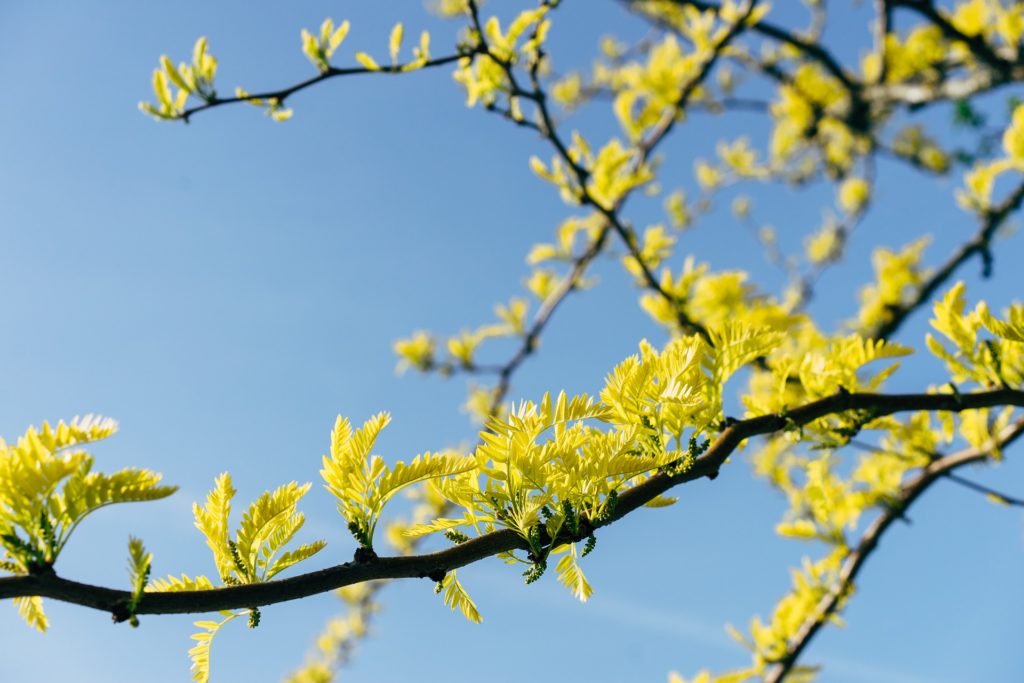As soon as the freezing temperatures disappear in Ontario, everyone races to garden centres and nurseries to get started on their spring gardening. Spring is the best season for focusing on your tree care and setting your trees up for a healthy growing season.
There are a number of steps you can take in early and mid-spring before your trees start to bud to help them grow after a long winter. Check out our tips here or contact our Certified Arborist for information pertaining to your specific tree species!
Fertilization
After a long cold winter in Ontario, soil lacks many of the nutrients that plants and trees need to grow. Fertilizing your soil in early spring in the areas around where your plants and trees grow will add these essential nutrients back in to allow them to grow successfully. It also makes your trees less susceptible to pests, diseases, and difficult weather.
Mulching
Mulching comes with a number of amazing benefits for your trees. It helps improve the quality of the soil and the ability of the soil and roots to soak up rain water effectively. It also helps prevent weeds from growing around the base of the tree that could threaten its health and growth.
Mulching is particularly important for young trees. It is recommended to mulch newly planted trees as soon as they are in the ground. Adding 2 to 4 inches of mulch around all your trees in the spring as soon as the frost is gone is a great way to help keep them healthy. Mulch should extend 1 to 2 feet out from the base of the tree, creating a circle.
Tree Pruning
Pruning to remove dead or broken tree branches is easier to do when the branches are bare. Of course it has an aesthetic value, so your tree grows a full and vibrant canopy, but more importantly it is to remove hazards and risks associated with falling branches. A tree with dying or broken branches in its canopy is also more susceptible to diseases and infestations. An arborist may also recommend cabling or bracing for specific branches of the tree that need some extra protection from future storm damage, but may not need to be pruned.
Tree pruning should be done as early in spring as possible. If trees are pruned after spring growth, the tree is more susceptible to pests and diseases. Pruning in early spring, while it is still cold outside and spring growth has not yet begun, is the best way to ensure the health of your tree.
Tree Planting
Spring is one of the most popular times to plant new trees, with good reason. The cooler spring weather gives the tree enough time to build its root system and grow before the hot summer months and the soil is moist and soft after the winter frost has left.
When choosing trees to plant, always ensure you select a native tree species that will fit your property as it grows. For more information about tree planting in the spring, visit our guide here.
Clean Up
In the spring, it is a good idea to clean up the debris and build up from the autumn and winter. Clearing your property of fallen branches and twigs, leaves, and other leftovers from the previous season will give your grass and plants better access to sunlight and water, allowing them to grow better in the spring. When soil is cleared of waste, the sunlight can penetrate a few millimeters below the surface and help roots grow better.
Tree Inspections
Spring is one of the best seasons to perform tree inspections and tree assessments. Because the leaves are not grown in, it is easier to see signs of disease or decay on branches of the tree. The bare branches also make winter damage easier to spot.
You can perform a basic tree inspection to look for things like broken branches or obvious signs of disease, like cankers. Spring is the best time of year for a Certified Arborist to visit your property to perform tree assessments so they can look for signs of disease, infestation, or decay that are not immediately obvious.
When you work with a Certified Arborist for your inspections, they will provide an Arborist Report detailing their findings and also provide recommendations for your tree health, including removals, pruning, treatment, or general care.
If you are looking for a Certified Arborist to perform a tree assessment this spring or any other time of the year, contact P & A! We can help you care for your trees in the best way possible.
